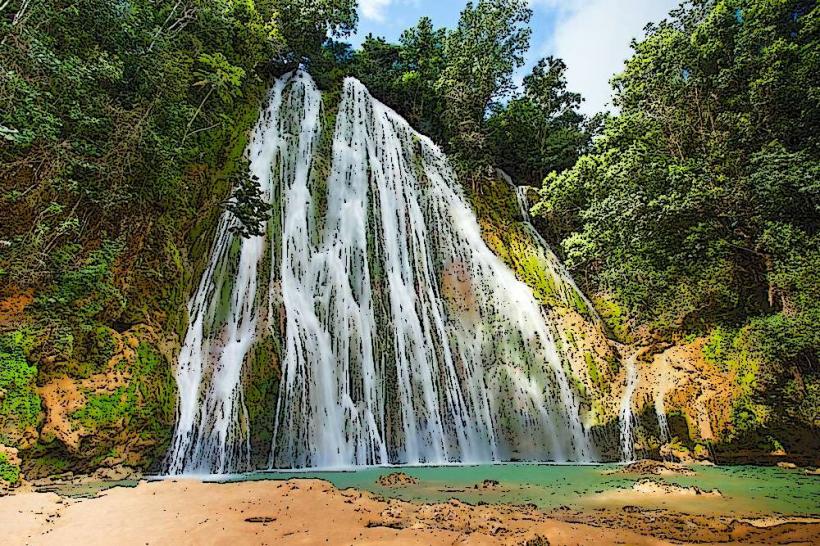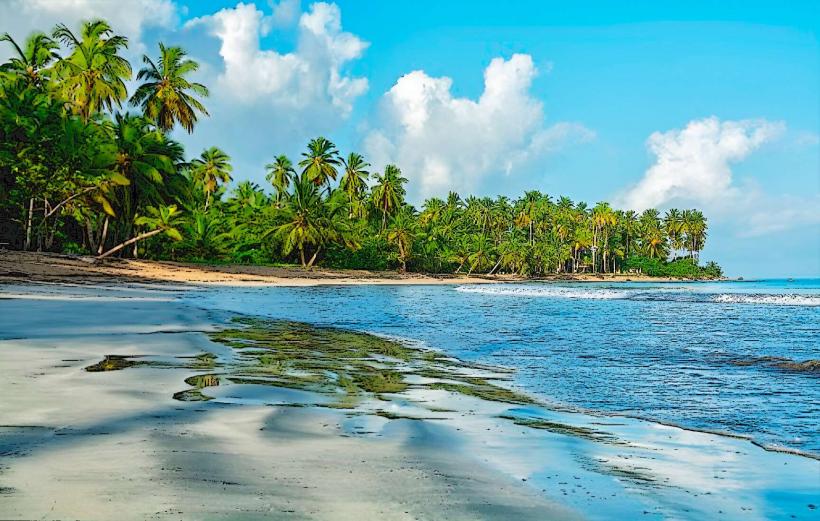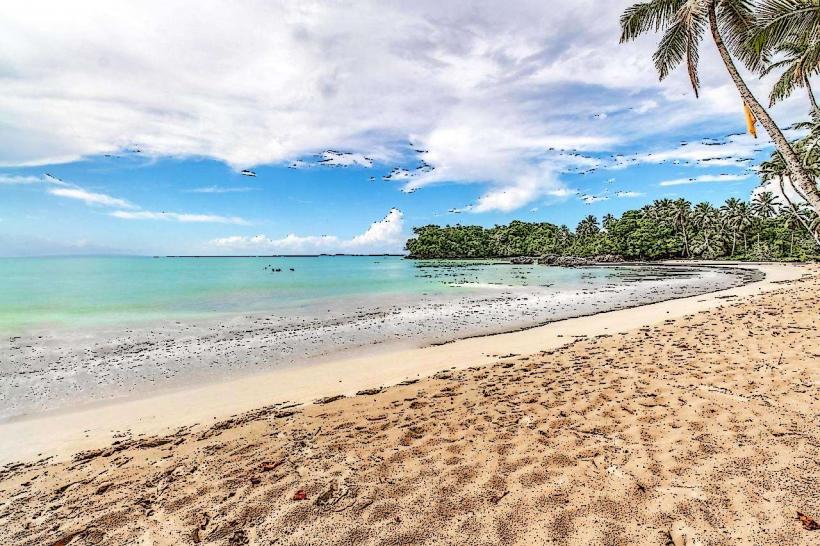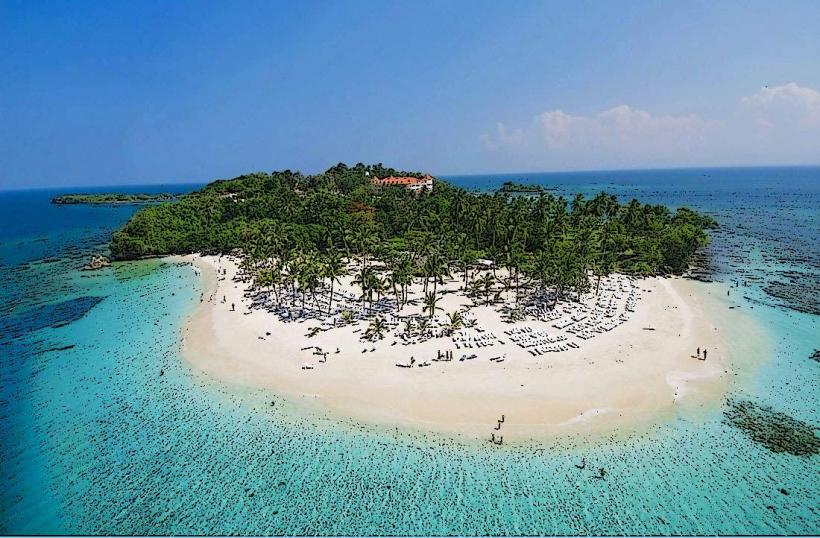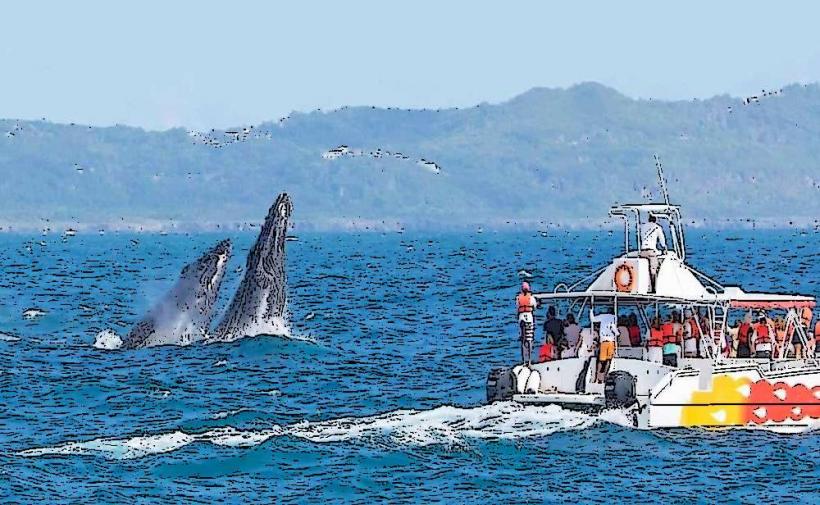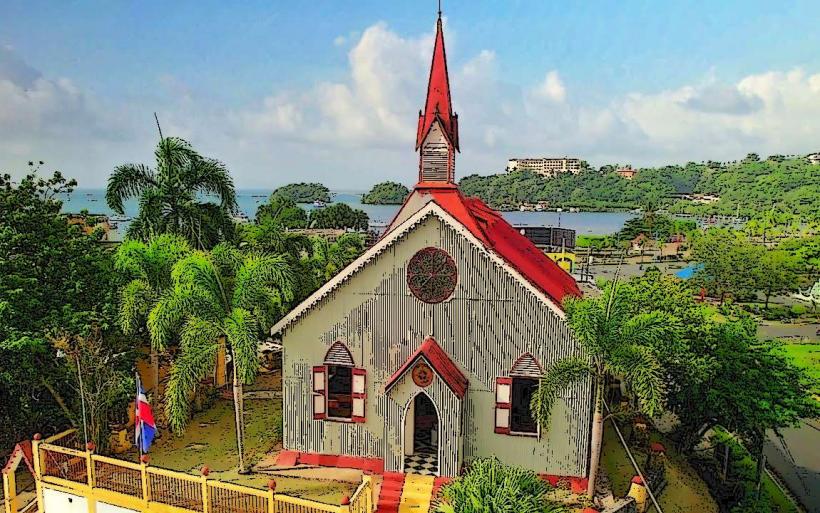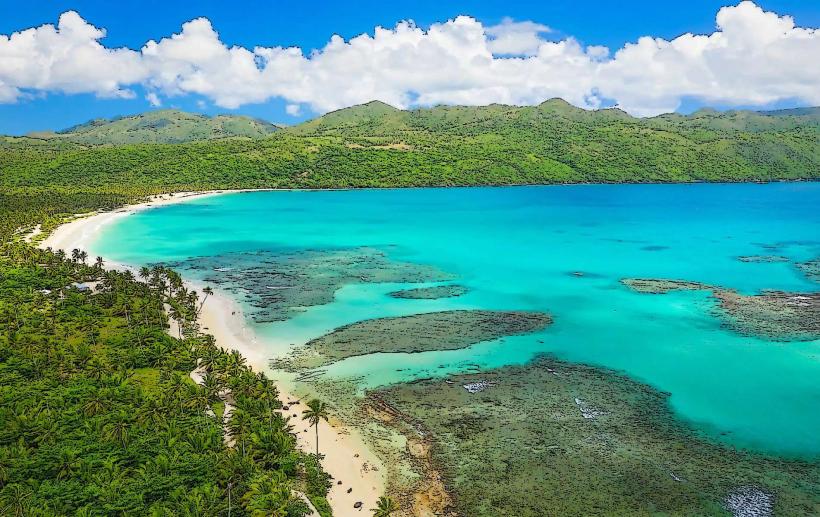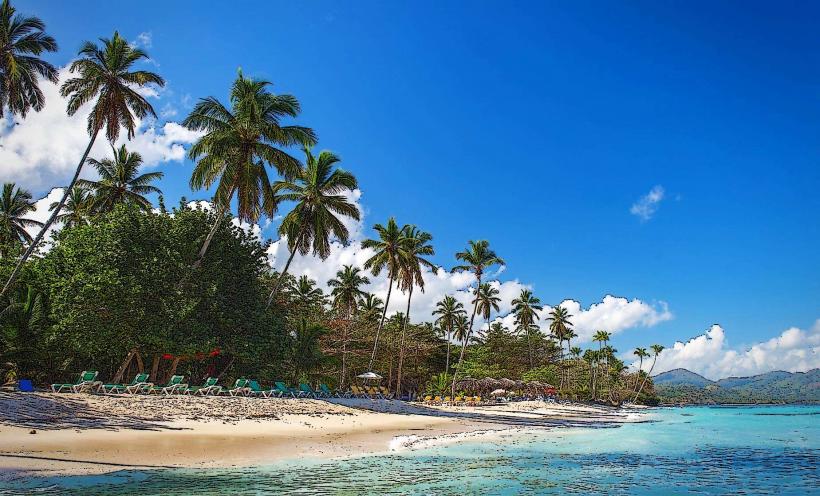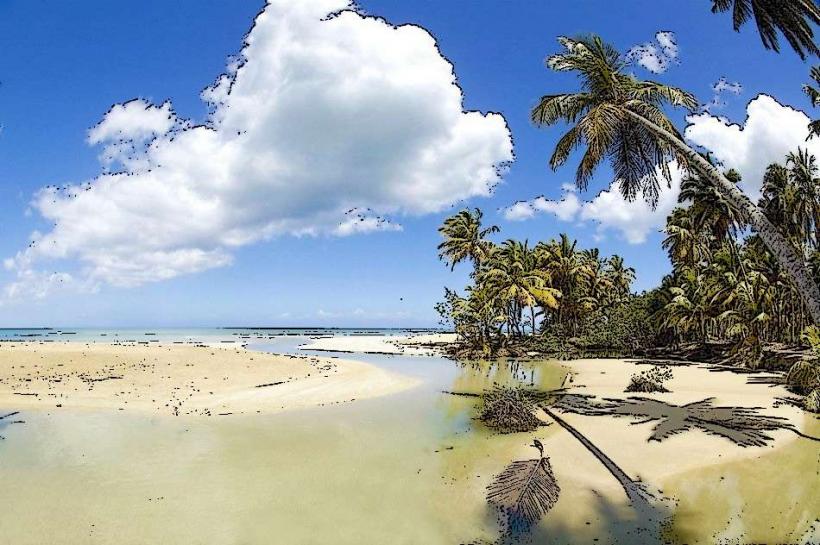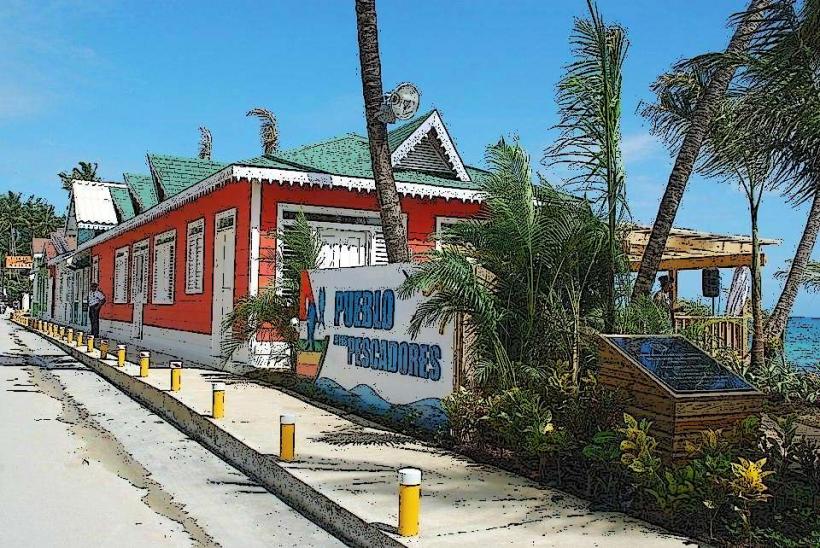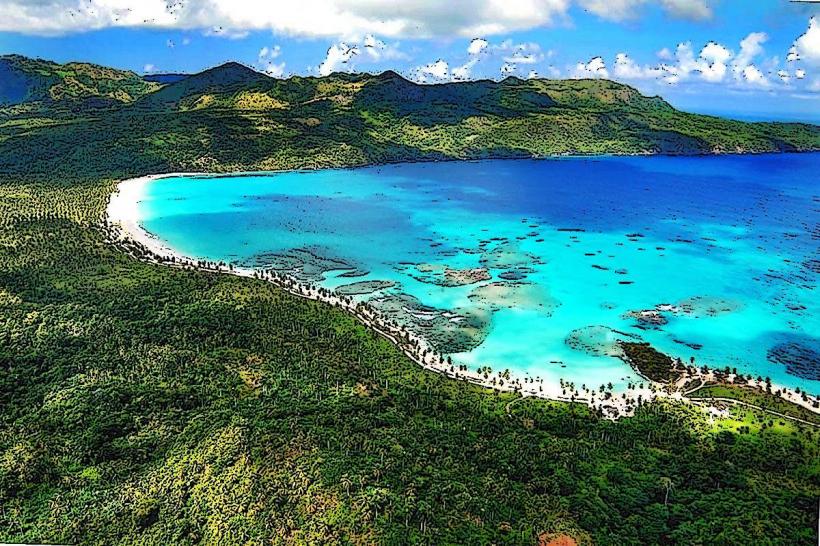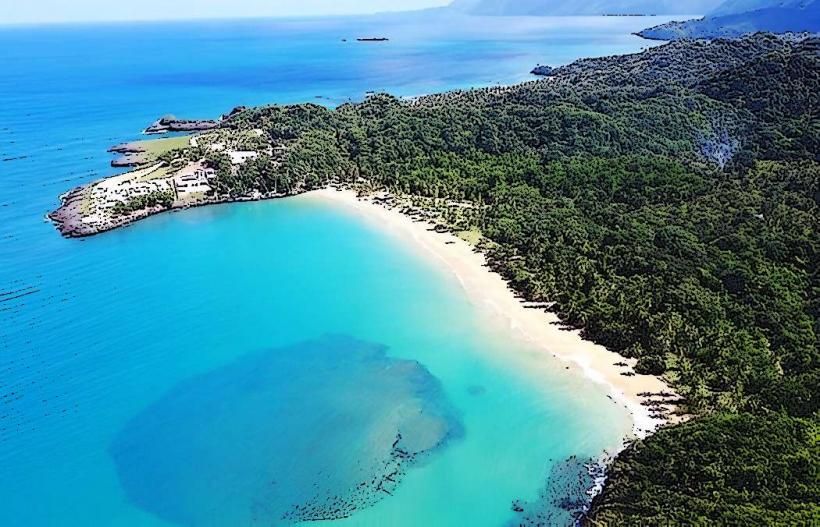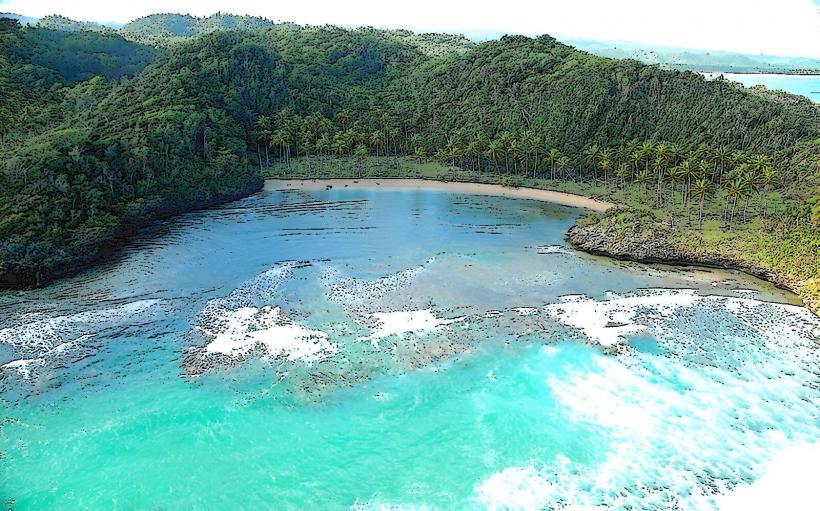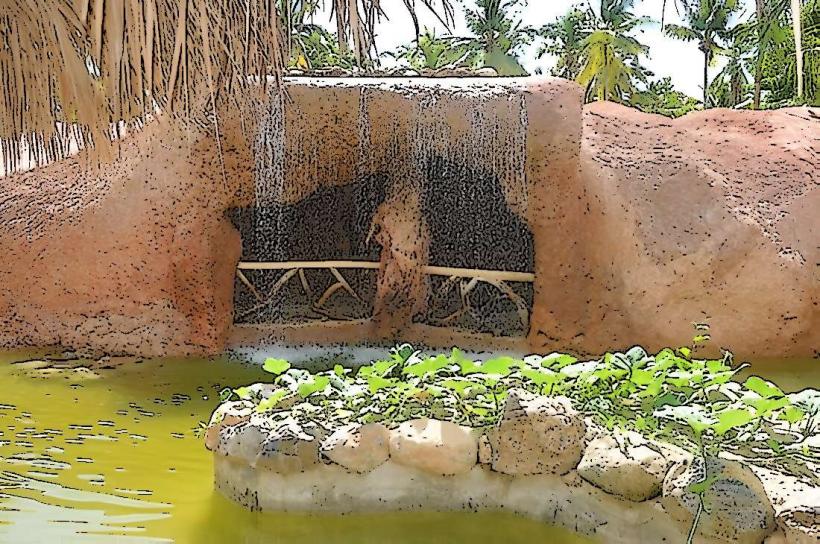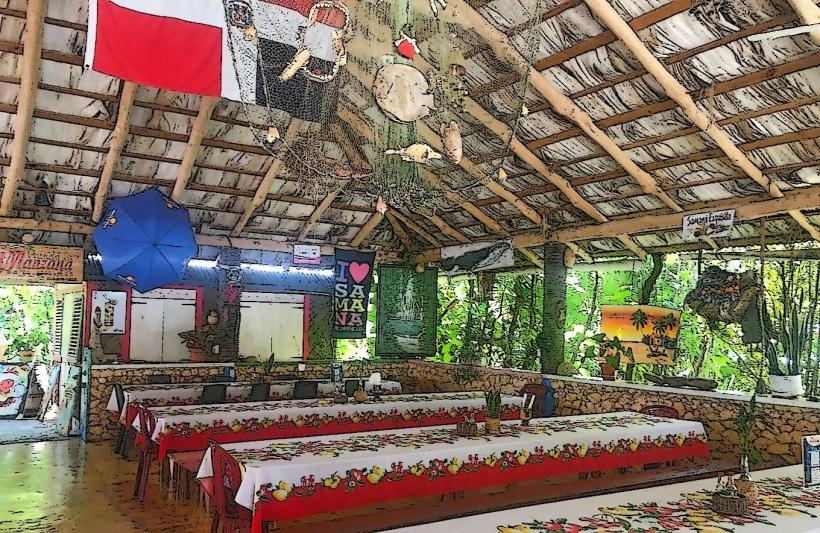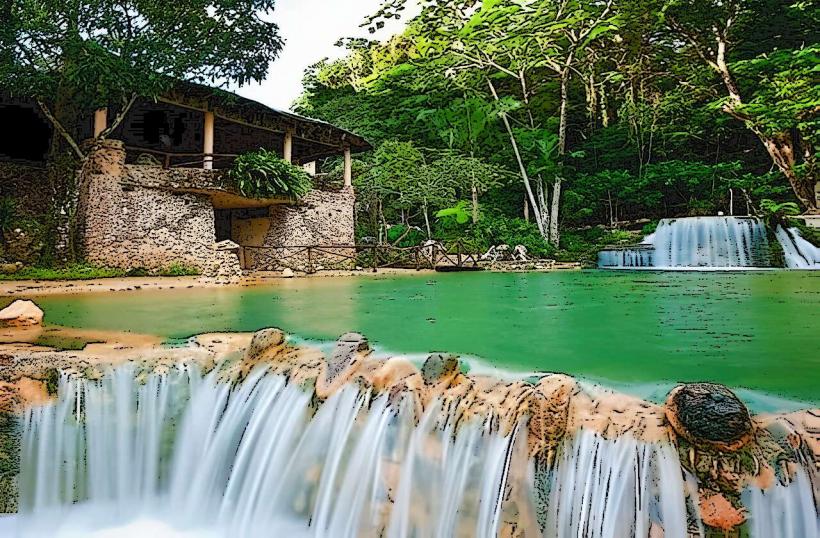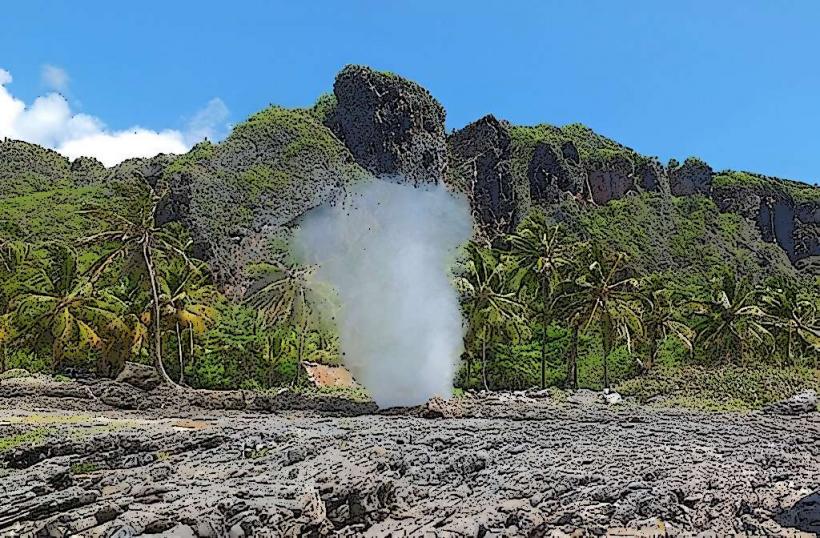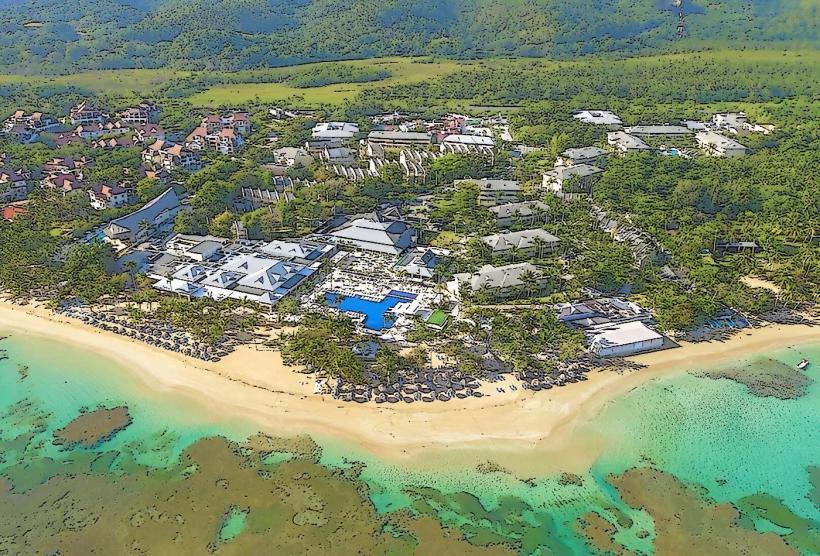Information
Landmark: Los Haitises National ParkCity: Samana
Country: Dominican Republic
Continent: North America
Los Haitises National Park (Parque Nacional Los Haitises) is one of the most important and picturesque natural reserves in the Dominican Republic. Located in the Samaná Province on the northeastern coast of the country, the park is renowned for its lush landscapes, rich biodiversity, and significant cultural and historical value. It is a unique destination for nature lovers, ecotourists, and those interested in the country’s heritage.
Here’s a detailed look at Los Haitises National Park:
Location and Accessibility
- Region: Samaná Province, Dominican Republic
- Nearest Towns: Samaná and Las Terrenas (about 30-45 minutes by boat or car)
- Size: Over 1,600 square kilometers (620 square miles), covering coastal areas, mangroves, caves, and tropical forests
- Coordinates: 19°13′N 69°30′W
The park is located along the northeastern coast of the Dominican Republic, primarily in Samaná Bay. It's accessible by boat from the towns of Samaná, Las Terrenas, or Cabo Cabrón. Many tour operators offer boat trips to the park, which is the best way to explore its unique features, such as the mangroves, islands, caves, and wildlife.
Natural Features
Mangrove Forests:
- The park is known for its extensive mangrove forests, which serve as vital ecosystems for various species of fish, birds, and other wildlife. These mangroves filter and protect the coastal waters, making the area an important part of the region's ecological health.
- The mangroves are easily explored by boat, offering a peaceful and scenic way to experience the park’s beauty.
Islands and Cays:
- Los Haitises is made up of several small islands and cays scattered across Samaná Bay, including Cayo de los Pescadores (Fisherman’s Cay), Cayo de los Pájaros (Bird Cay), and Cayo del Tiburón (Shark Cay). These islands are characterized by steep limestone cliffs, lush greenery, and crystal-clear waters.
- The islands are home to various species of seabirds, making them prime spots for birdwatching, especially during migration seasons.
Caves and Petroglyphs:
- The park is famous for its ancient caves and petroglyphs, created by the indigenous Taíno people. These caves were used by the Taíno as dwellings and ceremonial sites.
- Visitors can explore caves like Cueva de la Línea, Cueva de los Haitises, and Cueva de los Indios, where they can see Taíno rock art depicting figures, animals, and symbols.
- The petroglyphs are one of the most significant cultural features of the park, offering a glimpse into the ancient history of the island before European colonization.
Tropical Forests and Wildlife:
- Los Haitises is covered by dense tropical forests that are home to a wide variety of plants, animals, and birds. The park is known for its biodiversity, with species like iguana, manatee, and mongoose, as well as numerous bird species, including frigatebirds, herons, and pelicans.
- The park also contains several endemic species, making it a great destination for ecotourism and wildlife enthusiasts.
Cultural and Historical Significance:
- The park is not only a natural reserve but also holds significant historical and cultural value. The indigenous Taíno people once inhabited the region, and their presence can still be seen in the petroglyphs and artifacts found throughout the park.
- Additionally, the park was historically used by pirates and explorers, with the Spanish utilizing the caves for refuge during the colonial era.
Activities and Attractions
Boat Tours:
- The best way to explore Los Haitises National Park is by boat, as the park is primarily accessed through the waterways. Many local tour operators offer boat tours from Samaná or Las Terrenas, which include a visit to the mangrove forests, islands, and caves.
- Boat tours also provide an opportunity to explore the park’s coastal areas, which are home to scenic beaches and rich marine life.
Cave Exploration:
- Visitors can take guided tours through the park’s caves, where they can see the ancient Taíno petroglyphs, impressive rock formations, and explore the underground chambers. Some caves are relatively easy to access, while others require more adventurous exploration.
Birdwatching:
- Los Haitises is a birdwatching paradise, especially for those interested in seeing endemic species like the Samaná parrot (Amazona ventralis), which is found only in this area. The islands and mangroves provide a great environment for observing seabirds and other avian species in their natural habitat.
Hiking:
- Some areas of the park, especially the foothills and forests, are accessible by foot. Hiking tours allow visitors to explore the park’s flora and fauna, as well as its spectacular landscapes. There are trails leading to high points, providing panoramic views of the surrounding area.
Kayaking and Paddleboarding:
- The calm waters of the mangroves and the islands are perfect for kayaking or paddleboarding. Several operators offer rentals and guided tours for visitors who want to explore the waterways at their own pace.
Whale Watching (Seasonal):
- From January to March, Samaná Bay becomes one of the world’s best whale-watching spots, as humpback whales migrate to the area for mating and calving. Tours depart from Los Haitises to get closer to the action, providing an incredible opportunity to see these magnificent creatures up close.
Flora and Fauna
- Flora: The park is home to a wide range of tropical vegetation, including mangroves, palm trees, and dense rainforests. The plant life in the park plays a crucial role in maintaining the ecosystem and provides shelter for many species of birds and animals.
- Fauna: Los Haitises is rich in wildlife, including:
- Birds: The park is a birdwatcher's dream, with species like frigatebirds, brown pelicans, herons, and cormorants.
- Mammals: The park is home to a variety of mammals, including mangroves, manatees, and the Samaná squirrel.
- Reptiles and Amphibians: The park is home to numerous species of lizards, iguanas, and amphibians, including frogs and snakes.
Best Time to Visit
- Dry Season (November to April): The best time to visit Los Haitises is during the dry season, which runs from November to April. The weather is more predictable, and the skies are clearer, making it ideal for boat tours and other outdoor activities.
- Rainy Season (May to October): The rainy season is from May to October, but it doesn’t prevent visitors from exploring the park. Some parts of the park may become more difficult to access due to rain, but the dense vegetation is lush and vibrant during this period.
Conservation Efforts
Los Haitises National Park is a protected area, and efforts are ongoing to preserve its unique ecosystems and biodiversity. The park has been designated as a National Park to safeguard its natural beauty, rich wildlife, and historical sites. Sustainable tourism practices are being encouraged to minimize the impact on the park’s delicate ecosystems.
Conclusion
Los Haitises National Park is one of the Dominican Republic’s most remarkable natural treasures. With its stunning landscapes, rich biodiversity, and cultural significance, it offers a unique blend of ecological, historical, and adventure experiences. Whether you’re interested in exploring caves, observing wildlife, hiking through tropical forests, or cruising through mangrove waterways, this national park offers something for every type of traveler.

